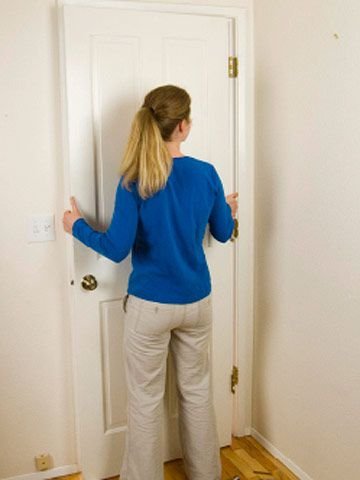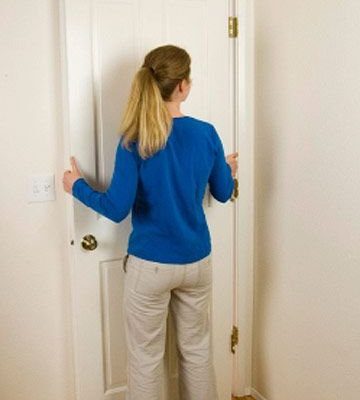
Unlocking the mystery behind a stubborn door involves understanding a bit about how locks work, the materials involved, and some simple troubleshooting steps. You might be thinking, “What if my door is just too old or needs a replacement?” Well, hold that thought! Let’s dive into how you can troubleshoot a door that’s hard to open when locked, regardless of whether it’s a standard latch or a more complex electronic system.
Understanding the Common Causes
When it comes to doors, especially those that lock, various factors could lead to difficulty in opening them. Often, the issue boils down to physical elements like dirt, rust, or even humidity. Each of these can impact how smoothly a door operates. Sometimes, you might be dealing with an old lock that simply needs some attention.
- Humidity and Weather Changes: Wood doors can swell in humid conditions, making locking mechanisms tighter. Think of it as the wood drinking water! Similarly, cold temperatures can cause metal components to contract, affecting their performance.
- Rust or Dirt Buildup: Over time, dirt, dust, and grime can accumulate in and around the lock and hinge. Just like how your car needs a wash every now and then, your door might need a little cleaning to function properly.
- Misalignment: If your door is not aligned properly within its frame, it could cause issues when locking and unlocking. It’s like trying to fit a square peg in a round hole — it just doesn’t work right!
Understanding these factors will help us go through the troubleshooting steps more effectively.
Checking the Lock Mechanism
So, what’s the first step when you find a door that’s hard to open when locked? Take a close look at the lock mechanism itself. Sometimes, the issue is internal. If you have the right tools, a simple inspection can go a long way.
Start by inspecting the keyhole for any obstructions. You might be surprised at what might be lurking inside! If you notice any dirt or debris, you can use a small brush or even compressed air to clean it out. Just be careful—too much pressure can damage the lock.
Next, try applying some lubricant. A graphite or silicone spray works wonders here. Just a little squirt can help loosen things up—think of it as giving your door a little spa treatment. Just make sure you open and close the lock several times to work the lubricant into the mechanism.
When the Key Won’t Turn
If, despite your efforts, the key won’t turn, you might have a more serious problem. Here’s the thing: sometimes, the problem isn’t just with the lock. If your key is worn or bent, it might not engage the lock pins properly. You can try using a spare key, if you have one, or consider having a new key made.
If the key turns but the door doesn’t open, it could indicate that the latch mechanism is stuck. Give the door a gentle push or pull while trying to turn the key to see if it releases. Remember, a little extra force can sometimes help.
Addressing Door Alignment Issues
If the lock mechanism seems fine but the door is still hard to open, it might be a case of misalignment. Over time, doors can shift slightly in their frames due to settling or humidity changes. This can make it harder to turn the lock or open the door.
To check for alignment issues, look at the gaps between the door and the frame. If you notice uneven spaces, it might just need a simple adjustment. Loosening the hinges slightly and repositioning the door before tightening them again can help.
Hinge Maintenance
Sometimes, the hinges themselves are the culprit. If they’ve rusted or are squeaking, they could be causing the door to stick. You can clean the hinges using a cloth and a mixture of soap and water. After that, apply some lubricant to keep them moving smoothly.
If the hinges are damaged, consider replacing them. New hinges can make a world of difference, bringing your door back to its prime.
For Electronic Locks: Troubleshooting Tips
Now, if you’re dealing with an electronic lock, the troubleshooting steps might differ. These locks are fantastic for added security and convenience, but they can sometimes be finicky.
First, check the batteries. If your lock operates on batteries, low power could be the reason it’s hard to open. Replace the batteries and see if that resolves the issue.
Next, consider resetting the lock. This can often resolve syncing issues between the lock and its remote or app. Each model might have a specific reset procedure, so be sure to follow the guidelines that came with your lock.
Syncing Issues with Remotes
If you’re using a remote to lock and unlock your door, syncing problems could also be a factor. Sometimes, simply re-pairing the remote with the lock might be necessary. Look up your lock’s specific instructions on how to pair the remote again.
If none of these solutions work, consider reaching out to the manufacturer for support or even check online forums for advice specific to your lock model.
Preventing Future Issues
Now that you’ve worked through diagnosing and addressing the problem, let’s talk about prevention. Regular maintenance can save you from headaches down the road.
Make it a habit to clean your door locks and hinges every few months. Just like you’d check the oil in your car, keeping an eye on your doors can help them last longer. Consider applying lubricant to the lock and hinges during these checks.
And if you notice your door sticking more frequently, look into whether it’s time to adjust the hinges or even have a professional take a look. A small investment in maintenance can save you a lot of frustration later.
Dealing with a door that’s hard to open when locked is something many people face at one time or another. By understanding common causes, checking the lock mechanism, and addressing any alignment issues, you can often resolve the problem without professional help. Whether you’re working with a traditional lock or an electronic system, there are simple troubleshooting steps you can take to restore your door’s functionality.
Taking time for regular maintenance will not only keep your door working smoothly but also enhance your home’s security. Next time you encounter a stubborn door, just remember: with a little patience and persistence, you can usually unlock the solution!
